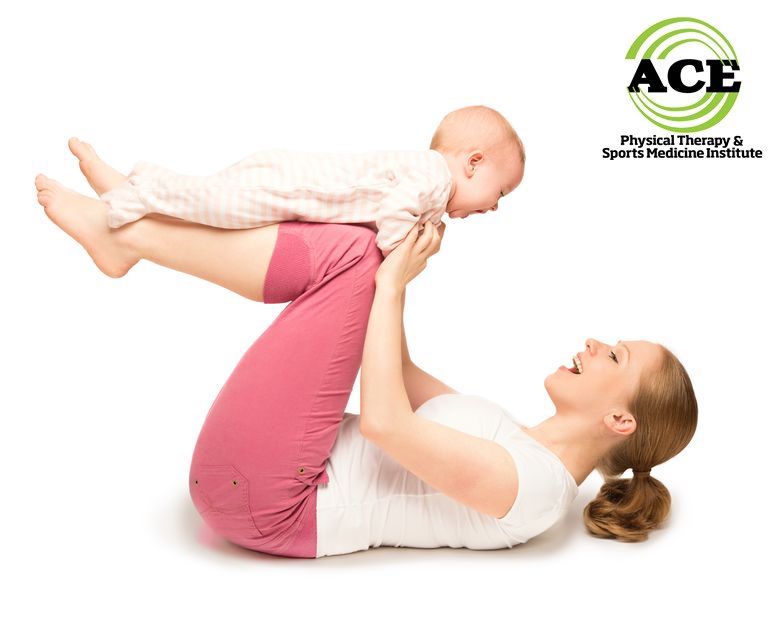POSTPARTUM EXERCISE

Tid Bits of Info
- 80% or greater of all vaginal deliveries produce pelvic floor muscle dysfunction that can last 6 months or more.
- The pelvic floor musculature must be a primary concern in the initial phase of post-partum rehabilitation.
- Cesarean surgeries must address the lack of mobility and hypersensitivity of the surgical scar.
- Core muscle weakness occurs in all pregnancies.
- Seek the help and treatment of a physical therapist that treats pelvic health conditions during the post-partum time period.
After your new baby’s been born, you may be ready to return to your active lifestyle. Give your body the time it needs to recover. Returning to high-level competition following a pregnancy could take nine months to a year. The pregnancy reorganizes the internal organs, stretches the abdominal musculature, causes pelvic floor dysfunction in many women, and deconditions almost every system of the mother’s body. Recovery from these changes will take time.
Total recovery time depends upon several factors such as type and length of delivery, and any other issues the mother may face. Regardless of the previous fitness level of the mother the time needed to heal does not change a great deal.
How was the baby delivered? Almost 80% of the vaginal deliveries face pelvic floor muscular dysfunction and incontinence for 6 months or longer. Caesarean delivery, on the other hand, impacts the abdominal musculature. The splitting of the rectus Abdominus muscle can take months to heal and has been associated with an increase in low back pain. Hormonal changes that occur to allow the delivery to occur are systemic and affect all of the ligaments of the body. The increased laxity of the ligaments can lead to injuries of any joint in the body if they are stressed excessively during an exercise routine.
The new mother should be instructed to begin pelvic floor exercises as soon as the pain has resolved. The retraining process can help to prevent incontinence, anal or vaginal prolapse and reduce the ill feeling in the pelvic region. The goal is to have these exercises performed several times per day at some point in the first trimester.
It is imperative to have the pelvic floor musculature functioning well prior to a return to any type of moderate to high impact activity. The absence of this good muscular control can lead to increased incidence of incontinence or prolapse due to the increased intra-abdominal pressure that occurs when someone performs a high-level, weight-bearing activity.

Cesarean births are associated with surgical “splitting” of the abdominal musculature. The first post-partum consideration is to control the surgical pain and make sure the surgical “wound” heals well. Part of the rehabilitation process has to be managing the surgical scar and making the scar mobility and sensitivity returns to normal. The muscle structure will heal and re-develop the tensile strength within 6 months. The initiation of low-intensity abdominal and core exercises is recommended around the six weeks post-partum. These exercises will help the healing process and re-establish the normal configuration of the developing scar tissue. The alignment and architecture of the new tissue is important to produce a firm, strong area in the muscle that was surgically cut.
The abdominal wall musculature is almost always adversely affected during the pregnancy and can split (diastatic recti). When this occurs the muscle can heal on its own if the split is not too large. In most instances if the split is 2cm or less it will heal but larger splits might need to be surgically corrected.
The core muscles and general deconditioning are the most effected during the pregnancy and must be the focus of rehabilitation during the post-partum time period. The length of time needed for an individual to return to an aggressive exercise post-partum routine is dependent upon the type of delivery and complications that occurred during the pregnancy. Regardless of the fitness level of the mother prior to the pregnancy the recovery period will take 9 months to a year to return to full pre-pregnancy fitness levels.
























